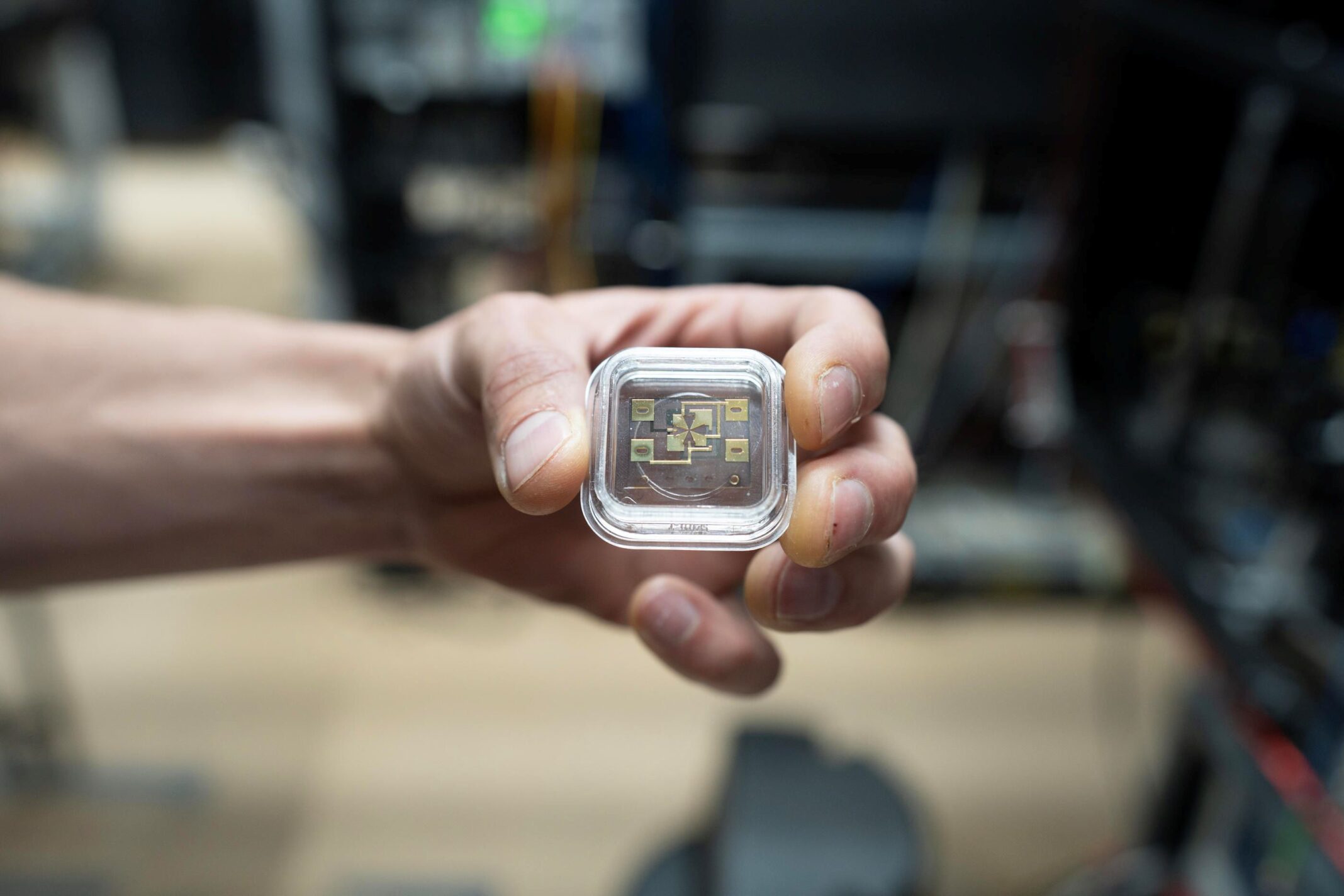Science
NIST Unveils World’s Most Accurate Atomic Clock Using Quantum Logic

Scientists at the National Institute of Standards and Technology (NIST) have developed the most accurate atomic clock to date, capable of measuring time with an unprecedented precision that could last for billions of years without losing a second. This groundbreaking achievement, revealed in March 2024, utilizes advanced quantum logic techniques, marking a significant milestone in the field of precision measurement.
This revolutionary atomic clock is based on aluminum ions and boasts an accuracy rate that surpasses previous models by a staggering 41%. It is also 2.6 times more stable than any ion clock previously constructed. Researchers achieved this remarkable precision through a combination of laser tuning and innovative vacuum chamber engineering.
Mason Marshall, a researcher at NIST and the lead author of the study published in Physical Review Letters, expressed excitement about this significant advancement, stating, “It’s exciting to work on the most accurate clock ever. At NIST, we get to carry out these long-term plans in precision measurement that can push the field of physics and our understanding of the world around us.”
Innovative Techniques for Enhanced Precision
The clock operates by pairing an aluminum ion with a magnesium ion, leveraging their unique properties to create an exceptionally precise timekeeping system. Aluminum is known for its steady atomic ticks, which are less affected by environmental factors such as temperature and magnetic fields compared to traditional cesium clocks. However, aluminum’s interaction with lasers posed a challenge.
Researchers addressed this issue by introducing magnesium, which is more compatible with laser techniques. In this setup, magnesium assists in cooling the aluminum ion and reflects its movements, allowing scientists to monitor the aluminum’s clock state through magnesium’s behavior. This innovative dual-ion system ultimately enhances the reliability and accuracy of the clock.
One of the primary challenges in developing this atomic clock was the design of the ion trap, which holds the ions in place. Initially, tiny vibrations, known as excess micromotion, disrupted the ions’ ticking rhythm. To rectify this, scientists redesigned the trap’s base using a thicker diamond wafer for increased stability and adjusted the gold coatings on the electrodes. These modifications minimized resistance and created a more stable environment for the ions, allowing for consistent and precise timekeeping.
Tackling Challenges for Improved Functionality
Despite its advanced design, the atomic clock faced interference from traces of hydrogen escaping from the steel vacuum chamber, which interfered with the ions’ ticking. To combat this, the team upgraded the chamber material to titanium, successfully reducing hydrogen levels by 150 times. This change enabled the clock to operate for extended periods without interruption, significantly enhancing its performance.
Additionally, the researchers required a super-stable laser to ensure accurate measurements of the ion’s ticks. The previous version of the clock relied on extensive averaging over weeks to smooth out quantum jitters. The NIST team collaborated with Jun Ye and his group at JILA, utilizing one of the most stable lasers globally, which had already been employed in the record-setting Strontium 1 lattice clock.
This collaboration involved a 3.6-kilometer underground fiber-optic connection to transmit the ultra-stable laser, ensuring precise synchronization of the aluminum ion clock’s laser. As a result, the time required for ion probing improved from 150 milliseconds to one full second, and the measurement speed increased dramatically, allowing for ultra-precise counting down to the 19th decimal place in just 1.5 days instead of three weeks.
This atomic clock not only sets new standards in timekeeping but also has broader implications. It has the potential to redefine the official length of a second and serve as a platform for exploring new clock architectures and quantum physics applications. Moreover, it could assist in Earth geodesy, providing precise measurements of Earth’s shape and gravitational field, and enable investigations into fundamental questions about the constants of nature.
With the advancement of this atomic clock, NIST researchers are poised to explore new horizons in precision measurement and quantum technology, paving the way for future innovations in the field. The findings represent a significant leap forward in both scientific understanding and practical applications of atomic timekeeping.
-

 World5 months ago
World5 months agoSBI Announces QIP Floor Price at ₹811.05 Per Share
-

 Lifestyle5 months ago
Lifestyle5 months agoCept Unveils ₹3.1 Crore Urban Mobility Plan for Sustainable Growth
-

 Science4 months ago
Science4 months agoNew Blood Group Discovered in South Indian Woman at Rotary Centre
-

 World5 months ago
World5 months agoTorrential Rains Cause Flash Flooding in New York and New Jersey
-

 Top Stories5 months ago
Top Stories5 months agoKonkani Cultural Organisation to Host Pearl Jubilee in Abu Dhabi
-

 Sports4 months ago
Sports4 months agoBroad Advocates for Bowling Change Ahead of Final Test Against India
-

 Science5 months ago
Science5 months agoNothing Headphone 1 Review: A Bold Contender in Audio Design
-

 Top Stories5 months ago
Top Stories5 months agoAir India Crash Investigation Highlights Boeing Fuel Switch Concerns
-

 Business5 months ago
Business5 months agoIndian Stock Market Rebounds: Sensex and Nifty Rise After Four-Day Decline
-

 Sports4 months ago
Sports4 months agoCristian Totti Retires at 19: Pressure of Fame Takes Toll
-

 Politics5 months ago
Politics5 months agoAbandoned Doberman Finds New Home After Journey to Prague
-

 Top Stories5 months ago
Top Stories5 months agoPatna Bank Manager Abhishek Varun Found Dead in Well









